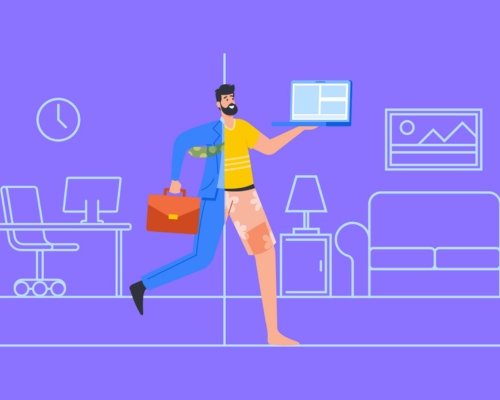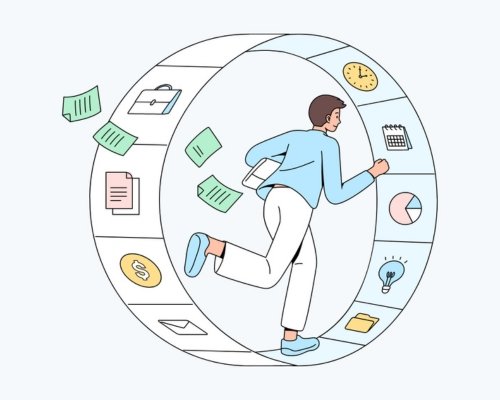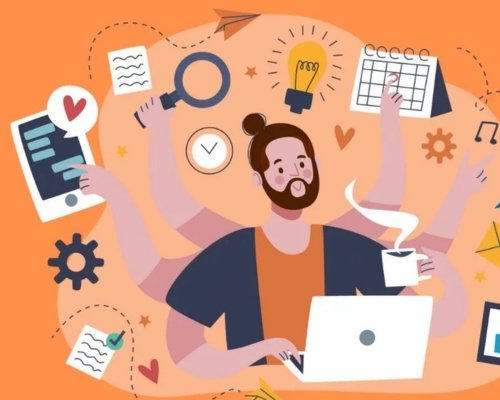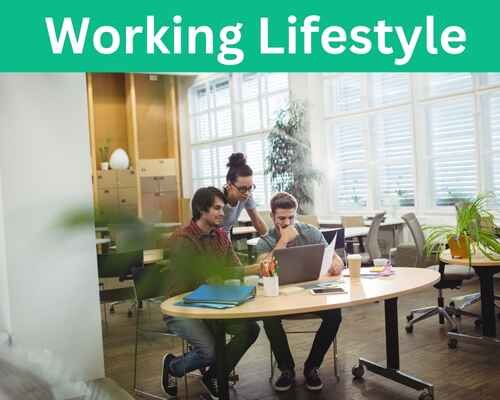A working lifestyle refers to the way individuals organize their professional and personal routines while adapting to modern workplace demands. In today’s fast-paced world, people experience different styles of work such as the traditional 9-to-5 job, remote work, freelance jobs, and the hybrid model that blends office and home-based work. The concept of a working lifestyle goes beyond earning a living—it influences health, productivity, and overall life satisfaction. With increasing focus on work-life balance and flexible schedules, choosing the right working lifestyle has become essential for every career boom and personal well-being.
Table of Contents
Types of Work Styles (9-to-5, Remote Work, Freelance, Hybrid Model)

The modern workforce has evolved to offer diverse work styles that cater to different needs and preferences. One of the most common is the 9-to-5 job, where employees work fixed hours in a structured office environment. This style provides stability, regular income, and clear professional growth opportunities, but it may sometimes limit flexibility.
Another popular option is remote work, which has gained massive attention after the global shift to digital workplaces. Remote work allows professionals to operate from home or anywhere in the world, offering freedom, reduced commute time, and better work-life balance. However, it can also present challenges like isolation and the need for strong self-discipline.
The freelance model is another growing trend in the working lifestyle. Freelancers enjoy independence, the ability to choose projects, and flexible working hours. This style suits creative professionals, writers, designers, and digital marketers, but it may involve income instability and lack of employee benefits.
Lastly, the hybrid model combines the best of both worlds. Employees split their time between office and remote work, gaining flexibility while maintaining collaboration with teams. This balanced approach is becoming a preferred choice for companies and workers seeking productivity without sacrificing personal freedom.
Daily Routines and Habits

A productive working lifestyle is built around well-structured daily routines and habits. Starting the day with a healthy morning routine—such as light exercise, meditation, or reading—helps set a positive tone for the rest of the day. Many successful professionals emphasize the importance of starting early, as it provides clarity, energy, and focus before work begins.
During work hours, creating consistent habits is essential for efficiency. Planning tasks, setting priorities, and using time-management tools can help professionals stay on track. Incorporating short breaks between work sessions, often known as the Pomodoro technique, prevents burnout and keeps energy levels balanced. Similarly, developing habits like staying hydrated, eating balanced meals, and practicing mindfulness during the day contribute to overall well-being.
Evening routines are equally important. Finishing tasks on time, reviewing the day’s progress, and preparing for the next day ensures smooth workflow and reduces stress. Many remote workers and freelancers find it helpful to set boundaries, such as ending work at a fixed hour, to maintain a healthy work-life balance.
Good habits not only enhance productivity but also create a sustainable working lifestyle. Whether working in a traditional 9-to-5 job, remote setup, or hybrid model, sticking to a balanced daily routine supports mental health, boosts creativity, and ensures long-term career growth. By developing consistent habits, individuals can achieve success while enjoying a fulfilling and healthy lifestyle.
Work-Life Balance Strategies
Maintaining a healthy work-life balance is one of the most important aspects of a sustainable working lifestyle. In today’s fast-paced world, professionals often struggle to juggle career demands with personal responsibilities, leading to stress and burnout. Developing practical strategies helps individuals achieve balance, boost productivity, and enjoy better overall well-being.
One powerful method is time management. Creating a daily schedule, setting clear priorities, and avoiding unnecessary distractions allow professionals to focus on essential tasks while still saving time for family, hobbies, and rest. Remote workers and freelancers especially benefit from setting fixed work hours to separate professional and personal life.
Another key strategy is learning to set boundaries. This includes saying no to excessive workloads, avoiding late-night emails, and dedicating quality time to personal relationships. Many people also adopt the practice of digital detox—limiting screen time after work to improve mental health and sleep quality.
Physical and mental wellness should also be prioritized. Regular exercise, meditation, and healthy eating habits reduce stress levels and improve energy throughout the day. Employers supporting flexible work arrangements, such as the hybrid model, also contribute to better balance by allowing employees To adjust their art work environment.
Ultimately, achieving work-life balance is not about working less but about working smarter. By managing time effectively, setting boundaries, and prioritizing well-being, professionals can create a lifestyle that fosters both career growth and personal happiness.
Health and Wellness in Work Life

A sustainable working lifestyle depends greatly on maintaining proper health and wellness. In today’s demanding work environment, professionals often face long hours, high stress, and limited time for self-care. Focusing on both physical and mental well-being is essential to improve productivity, reduce burnout, and achieve long-term success.
Physical health begins with simple yet effective habits. Regular exercise, whether it’s a morning jog, yoga, or stretching during breaks, helps improve energy levels and focus. A balanced diet and proper hydration further enhance concentration and prevent fatigue. For office workers and remote employees alike, maintaining good posture and an ergonomic workstation reduces the risk of back pain, eye strain, and other health issues.
Mental wellness is equally important in the workplace. Stress management techniques such as meditation, deep breathing, or mindfulness exercises can significantly reduce anxiety and improve emotional stability. Taking short breaks, practicing gratitude, and spending time with loved ones also play a vital role in mental health.
Employers and organizations are increasingly promoting workplace wellness programs, including counseling sessions, fitness initiatives, and flexible working options like the hybrid model. These efforts help employees strike a balance between professional demands and personal well-being.
Role of Technology in Modern Work
Technology has transformed the way we live and reshaped the modern working lifestyle. From communication tools to automation systems, digital innovations have made work faster, smarter, and more flexible. Today’s employees and businesses rely heavily on technology to improve efficiency, collaboration, and overall productivity.
One of the biggest impacts is the rise of remote work. With video conferencing platforms, cloud storage, and project management tools, professionals can collaborate seamlessly from any location. This has given rise to the hybrid model, where employees split time between office and home, enjoying both flexibility and teamwork.
Automation and artificial intelligence are also redefining work. Routine tasks are now handled by software, allowing employees to focus on creative and strategic responsibilities. For example, AI-powered chatbots manage customer service inquiries, while analytics tools provide insights to guide business decisions.
Mobile technology and apps further enhance workplace productivity. Employees can schedule meetings, track tasks, and communicate instantly, eliminating delays and streamlining workflow. At the same time, cybersecurity has become an important consideration, as protecting data and maintaining digital security are critical in the digital age.
Cultural and Generational Differences
The working lifestyle is shaped not only by technology and job roles but also by cultural and generational differences. Work habits, communication styles, and career priorities vary greatly across regions and age groups, influencing how individuals adapt to the modern workplace.
Cultural differences play a major role in defining work ethics and expectations. In some countries, a traditional 9-to-5 job with strict office hours is considered essential for professionalism, while others embrace remote work and flexible schedules as a norm. For instance, Western workplaces often emphasize independence and innovation, while Eastern cultures may focus on teamwork, discipline, and hierarchy. These variations affect how employees collaborate and balance personal and professional lives.
Generational differences are equally significant. Baby Boomers often prefer stability, structured office routines, and long-term career commitments. Generation X values independence and adaptability, balancing traditional work practices with modern flexibility. Millennials focus strongly on purpose-driven careers, work-life balance, and digital solutions to manage tasks. Meanwhile, Gen Z, the newest workforce generation, demands flexibility, technological integration, and opportunities for growth in a fast-paced environment.
These differences can sometimes lead to misunderstandings in the workplace but can also foster innovation when managed effectively. Companies that recognize and respect cultural diversity while embracing generational strengths can build stronger, more dynamic teams.
Challenges in Today’s Work Culture
The modern work culture offers flexibility and opportunities, but it also brings significant challenges that impact the working lifestyle. As organizations adapt to rapid technological and social changes, employees face new pressures that affect their productivity, health, and overall well-being.
One of the biggest challenges is work-life balance. With the rise of remote work and the hybrid model, the boundaries between professional and personal life often blur. Many employees struggle to disconnect after working hours, leading to longer workdays, stress, and eventually burnout.
Another major challenge is job insecurity, especially within the gig economy and freelance sectors. While flexible work styles provide independence, they often lack benefits such as health insurance, retirement plans, and job stability, making financial planning difficult.
Additionally, mental health concerns are becoming increasingly common in today’s workplaces. High workloads, unrealistic deadlines, and constant digital connectivity create pressure that can harm emotional well-being. Companies that fail to address these issues may see reduced employee engagement and higher turnover rates.
Cultural and generational gaps also add complexity. Different age groups and diverse backgrounds bring unique strengths, but they can also lead to communication barriers or conflicting expectations if not managed well.
Future Trends in Working Lifestyle (Remote Work, Hybrid Model)
The future of the working lifestyle is rapidly evolving, driven by technology, employee preferences, and global workplace changes. Two of the most significant trends shaping this future are remote work and the hybrid model, both of which are redefining how people approach their professional lives.
Remote work has moved beyond being a temporary solution—it is now a permanent part of modern work culture. With advanced communication tools, cloud systems, and virtual collaboration platforms, professionals can work from anywhere in the world. This flexibility not only reduces commuting stress but also allows employees to design a lifestyle that balances productivity with personal freedom.
At the same time, the hybrid model is gaining popularity as it offers the best of both worlds. Employees spend part of their time in the office for collaboration and networking, while also working remotely for focused tasks. This approach enhances employee satisfaction, encourages teamwork, and supports greater efficiency.
Other future trends include the rise of digital nomads, who use remote work opportunities to travel while working, and the integration of artificial intelligence and automation to handle routine tasks. Workplaces are also expected to become more sustainable, with eco-friendly practices and flexible workspaces becoming the norm.
Conclusion and Key Takeaways
The concept of a working lifestyle has undergone a remarkable transformation in recent years. From the traditional 9-to-5 job to the rise of remote work, freelancing, and the hybrid model, professionals today have more choices than ever in shaping their careers. Each work style comes with unique benefits and challenges, making it essential for individuals to select the approach that aligns with their personal goals, health, and long-term aspirations.
One of the most important lessons is the need to maintain a healthy work-life balance. Daily routines, time management strategies, and wellness practices play a crucial role in building a sustainable lifestyle that supports both professional success and personal happiness. At the same time, organizations must recognize the value of supporting employee well-being through flexibility, wellness programs, and inclusive work cultures.
Technology will continue to be a driving force, enabling faster collaboration, automation of routine tasks, and the expansion of global work opportunities. Similarly, cultural and generational diversity will enrich workplaces, provided companies foster understanding and inclusivity.
Key Takeaways:
- A successful working lifestyle requires balance, adaptability, and well-being.
- Remote work and hybrid models are shaping the future of work.
- Time management and healthy daily habits boost productivity.
- Technology and AI will continue to redefine modern work culture.
- Embracing cultural and generational differences strengthens teams.
In conclusion, the future of work depends on building a flexible, healthy, and technology-driven working lifestyle that empowers individuals and organizations alike.

This was beautiful Admin. Thank you for your reflections.
There is definately a lot to find out about this subject. I like all the points you made
This post is a great starting point for anyone new to the subject.
I tried the method and had positive results — thanks for sharing!